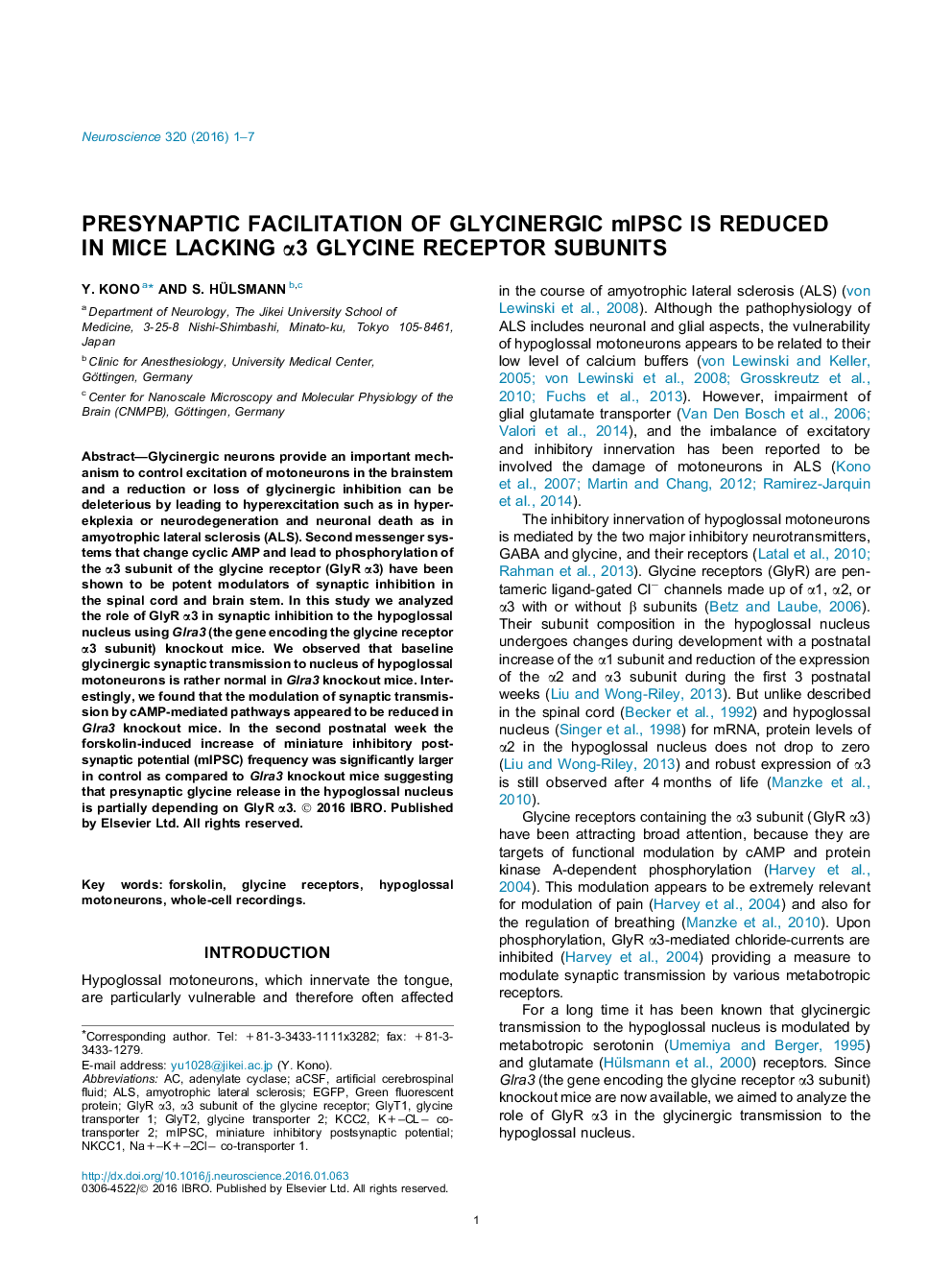| Article ID | Journal | Published Year | Pages | File Type |
|---|---|---|---|---|
| 6271300 | Neuroscience | 2016 | 7 Pages |
â¢The α3 subunit of the glycine receptors (GlyR α3) controls excitation of motoneurons.â¢We analyzed the role of GlyR α3 in synaptic inhibition to the hypoglossal nucleus.â¢We used Glra3 (the gene encoding GlyR α3) knockout mice for analysis.â¢Synaptic transmission by cAMP-mediated pathways was reduced in Glra3 knockout mice.â¢We found that the GlyR α3 is a novel presynaptic element of glycinergic inhibition.
Glycinergic neurons provide an important mechanism to control excitation of motoneurons in the brainstem and a reduction or loss of glycinergic inhibition can be deleterious by leading to hyperexcitation such as in hyperekplexia or neurodegeneration and neuronal death as in amyotrophic lateral sclerosis (ALS). Second messenger systems that change cyclic AMP and lead to phosphorylation of the α3 subunit of the glycine receptor (GlyR α3) have been shown to be potent modulators of synaptic inhibition in the spinal cord and brain stem. In this study we analyzed the role of GlyR α3 in synaptic inhibition to the hypoglossal nucleus using Glra3 (the gene encoding the glycine receptor α3 subunit) knockout mice. We observed that baseline glycinergic synaptic transmission to nucleus of hypoglossal motoneurons is rather normal in Glra3 knockout mice. Interestingly, we found that the modulation of synaptic transmission by cAMP-mediated pathways appeared to be reduced in Glra3 knockout mice. In the second postnatal week the forskolin-induced increase of miniature inhibitory postsynaptic potential (mIPSC) frequency was significantly larger in control as compared to Glra3 knockout mice suggesting that presynaptic glycine release in the hypoglossal nucleus is partially depending on GlyR α3.
